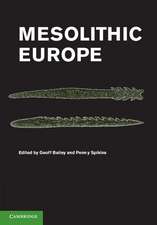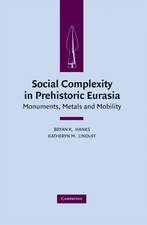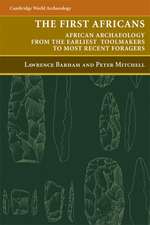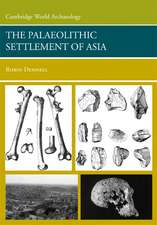The Mycenaean Tree and Pillar Cult and its Mediterranean Relations: With Illustrations from Recent Cretan Finds: Cambridge Library Collection - Archaeology
Autor Arthur John Evansen Limba Engleză Paperback – 26 iun 2013
Din seria Cambridge Library Collection - Archaeology
- 19%
 Preț: 565.75 lei
Preț: 565.75 lei -
 Preț: 171.10 lei
Preț: 171.10 lei - 19%
 Preț: 608.32 lei
Preț: 608.32 lei - 19%
 Preț: 643.23 lei
Preț: 643.23 lei - 19%
 Preț: 551.86 lei
Preț: 551.86 lei - 23%
 Preț: 721.86 lei
Preț: 721.86 lei - 19%
 Preț: 609.42 lei
Preț: 609.42 lei - 11%
 Preț: 421.60 lei
Preț: 421.60 lei -
 Preț: 418.12 lei
Preț: 418.12 lei -
 Preț: 520.59 lei
Preț: 520.59 lei -
 Preț: 331.70 lei
Preț: 331.70 lei -
 Preț: 223.02 lei
Preț: 223.02 lei -
 Preț: 278.43 lei
Preț: 278.43 lei -
 Preț: 240.89 lei
Preț: 240.89 lei -
 Preț: 468.48 lei
Preț: 468.48 lei -
 Preț: 538.11 lei
Preț: 538.11 lei -
 Preț: 464.99 lei
Preț: 464.99 lei -
 Preț: 448.80 lei
Preț: 448.80 lei -
 Preț: 367.12 lei
Preț: 367.12 lei - 19%
 Preț: 460.29 lei
Preț: 460.29 lei -
 Preț: 378.37 lei
Preț: 378.37 lei -
 Preț: 522.93 lei
Preț: 522.93 lei -
 Preț: 467.51 lei
Preț: 467.51 lei -
 Preț: 227.04 lei
Preț: 227.04 lei - 19%
 Preț: 575.80 lei
Preț: 575.80 lei -
 Preț: 370.98 lei
Preț: 370.98 lei -
 Preț: 469.04 lei
Preț: 469.04 lei -
 Preț: 222.41 lei
Preț: 222.41 lei -
 Preț: 279.79 lei
Preț: 279.79 lei -
 Preț: 281.48 lei
Preț: 281.48 lei -
 Preț: 466.53 lei
Preț: 466.53 lei -
 Preț: 367.54 lei
Preț: 367.54 lei -
 Preț: 420.27 lei
Preț: 420.27 lei -
 Preț: 519.83 lei
Preț: 519.83 lei -
 Preț: 379.25 lei
Preț: 379.25 lei -
 Preț: 369.62 lei
Preț: 369.62 lei -
 Preț: 376.64 lei
Preț: 376.64 lei -
 Preț: 221.64 lei
Preț: 221.64 lei -
 Preț: 523.09 lei
Preț: 523.09 lei -
 Preț: 474.33 lei
Preț: 474.33 lei -
 Preț: 355.60 lei
Preț: 355.60 lei
Preț: 286.97 lei
Nou
Puncte Express: 430
Preț estimativ în valută:
54.91€ • 57.48$ • 45.70£
54.91€ • 57.48$ • 45.70£
Carte tipărită la comandă
Livrare economică 31 martie-14 aprilie
Preluare comenzi: 021 569.72.76
Specificații
ISBN-13: 9781108060912
ISBN-10: 1108060919
Pagini: 126
Ilustrații: 70 b/w illus. 1 colour illus.
Dimensiuni: 210 x 297 x 7 mm
Greutate: 0.32 kg
Editura: Cambridge University Press
Colecția Cambridge University Press
Seria Cambridge Library Collection - Archaeology
Locul publicării:Cambridge, United Kingdom
ISBN-10: 1108060919
Pagini: 126
Ilustrații: 70 b/w illus. 1 colour illus.
Dimensiuni: 210 x 297 x 7 mm
Greutate: 0.32 kg
Editura: Cambridge University Press
Colecția Cambridge University Press
Seria Cambridge Library Collection - Archaeology
Locul publicării:Cambridge, United Kingdom
Cuprins
1. Cretan caves and hypaethral sanctuaries; 2. Sacred fig-tree and altar on a pnyxis from Knossos; 3. The dove cult of primitive Greece; 4. The association of sacred tree and pillar; 5. The 'labyrinth' and the pillar shrines of the god of the double axe; 6. The 'baetylos' and baetylic tables of offering; 7. Zeus Kappotes; 8. Sepulchral stylae; 9. The tomb of Zeus; 10. Small dimensions of the Mycenaean shrines; 11. Aniconic cult images; 12. Survivals of tree and pillar cult; 13. The ficus ruminalis; 14. Semitic religious sources; 15. The horns of consecration; 16. Trinities and other groups; 17. The pillar of the house; 18. Egyptian influences; 19. The Egyptian element in the animal supporters; 20. Sacred trees and foliated pillars; 21. Architectural columns with animal supporters; 22. Anthropomorphic figures of divinities; 23. Mycenaean daemons; 24. A Mycenaean 'bethshemesh'; 25. Cult scenes relating to a warrior god; 26. Sacred gateways; 27. The dolmen shrines; 28. Fresco representing small baetylic temple; 29. Parallels to the baetylic shrines; 30. An oriental pillar shrine.
Descriere
Published in 1901, this highly illustrated work surveys the evidence for a common form of religious worship across the Mediterranean Mycenaean world.











